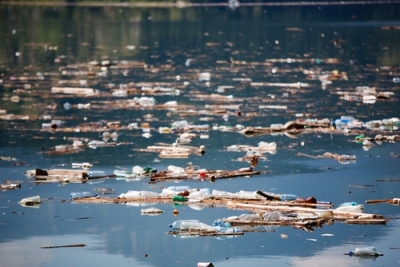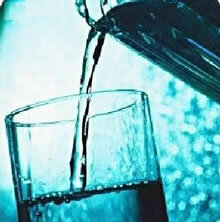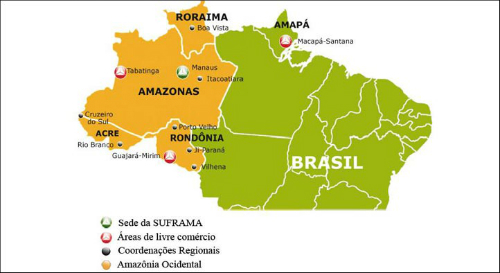The water offered to the population is subjected to a series of appropriate treatments that will reduce the concentration of pollutants to the point where they do not present health risks. Each stage of treatment represents an obstacle to the transmission of infections.
The first of these steps is the COAGULATION, when the raw water receives, as soon as it enters the treatment plant, a dosage of aluminum sulphate. This element causes the dirt particles to start a bonding process.
follows the FLOCULATION, when, in concrete tanks, the process of agglutination of impurities continues in the moving water. The particles turn into flakes of dirt.
The water enters other tanks, where the DECANTATION. The impurities, which have agglutinated and formed flakes, will separate from the water by the action of gravity, going to the bottom of the tanks or becoming trapped in their walls.
The next step is the FILTRATION, when the water passes through large filters with layers of pebbles (river stone) and sand, with different granules and anthracite coal (mineral coal). There, the impurities that went through the previous phases will be retained.
The water at this point is already drinkable, but for greater protection against the risk of waterborne infections, the process of DISINFECTION. It is chlorination, to eliminate germs that are harmful to health and ensure the quality of water up to the consumer's tap. In this process, sodium hypochlorite, chlorine gas or chlorine dioxide can be used.
The next step is to FLUORIDE, when sodium fluosilicate or fluosilicic acid will be added in suitable dosages. The function of this is to prevent and reduce the incidence of tooth decay, especially in consumers from zero to 14 years of age, the period of tooth formation.
The last action in this water treatment process is the CORRECTION of pH, when hydrated lime or light ash (sodium carbonate) is added for adequate neutralization to protect the network's piping and the users' homes.
Enter raw water inlet into ETA and its exit, already drinking, takes about 30 minutes.
SEWAGE TREATMENT
The treatment of domestic sewage mainly aims to: remove solid material; reduce biochemical oxygen demand; exterminate pathogenic microorganisms; reduce unwanted chemicals.
The different units of the conventional station can be grouped according to the efficiencies of the treatments it provides. So we have:
Preliminary treatment: grating, grease removal and sand removal.
Primary treatment: preliminary treatment, decantation, sludge digestion and sludge drying.
Secondary treatment: primary treatment, biological treatment, secondary decantation and disinfection.
DISEASES CAUSED BY CONTAMINATED WATER
Diseases caused by parasites
Amebiasis: The contagion is through water contaminated with cysts from human feces.
Schistosomiasis: The contagion occurs through direct contact with water where there are larvae from contaminated snails.
Ascariasis: The contagion occurs with the consumption of water where the parasite Áscaris Lumbricoides is present.
Giardiasis: The contagion occurs with the consumption of water where there is the parasite Giárdia Lamblya.
Virus Diseases
Viral Hepatitis Type A and Polio: The contagion occurs through contact (consumption or bathing) with water containing human urine or feces.
Diseases caused by Bacteria
Meningoencephalitis: The contagion occurs through contact (consumption or bathing) with contaminated water.
Cholera: The contagion occurs with the consumption of water contaminated by feces or vomit from a contaminated individual.
Leptospirosis: Water contaminated with rat urine is the main cause of the disease, whose incidence increases with heavy rains and floods. It presents greater danger in waters close to garbage dumps and in areas without sanitary sewage.
Typhoid fever: The contagion is caused by ingestion of contaminated water or food (food contamination occurs when washing food with contaminated water).
Gastroenteritis: ingestion of water or food contaminated with feces causes a wide variety of gastric disorders, usually associated with severe diarrhea.
Bacillary Dysentery: A series of bacteria cause, through the ingestion of water without treatment, severe forms of diarrhea, forming a picture of fever, pain and general malaise.
Do not stop now... There's more after the advertising ;)
Would you like to reference this text in a school or academic work? Look:
SCHOOL, Team Brazil. "Water and Sewage Treatment"; Brazil School. Available in: https://brasilescola.uol.com.br/geografia/tratamento-de-agua-e-esgoto.htm. Accessed on June 27, 2021.
Chemistry

Water pollution, physical aspects of water, chemical aspects of water, biological aspects of water, industrial waste, heavy metals, drinking water, organic matter, water turbidity, sewage.
Chemistry

Water treatment, filtration, flocculation, decantation, chlorination, potabilization, peat, aluminum sulphate, treatments physical and chemical conditions for water, waterborne diseases, amoebiasis, giardiasis, gastroenteritis, typhoid and paratyphoid, liver



